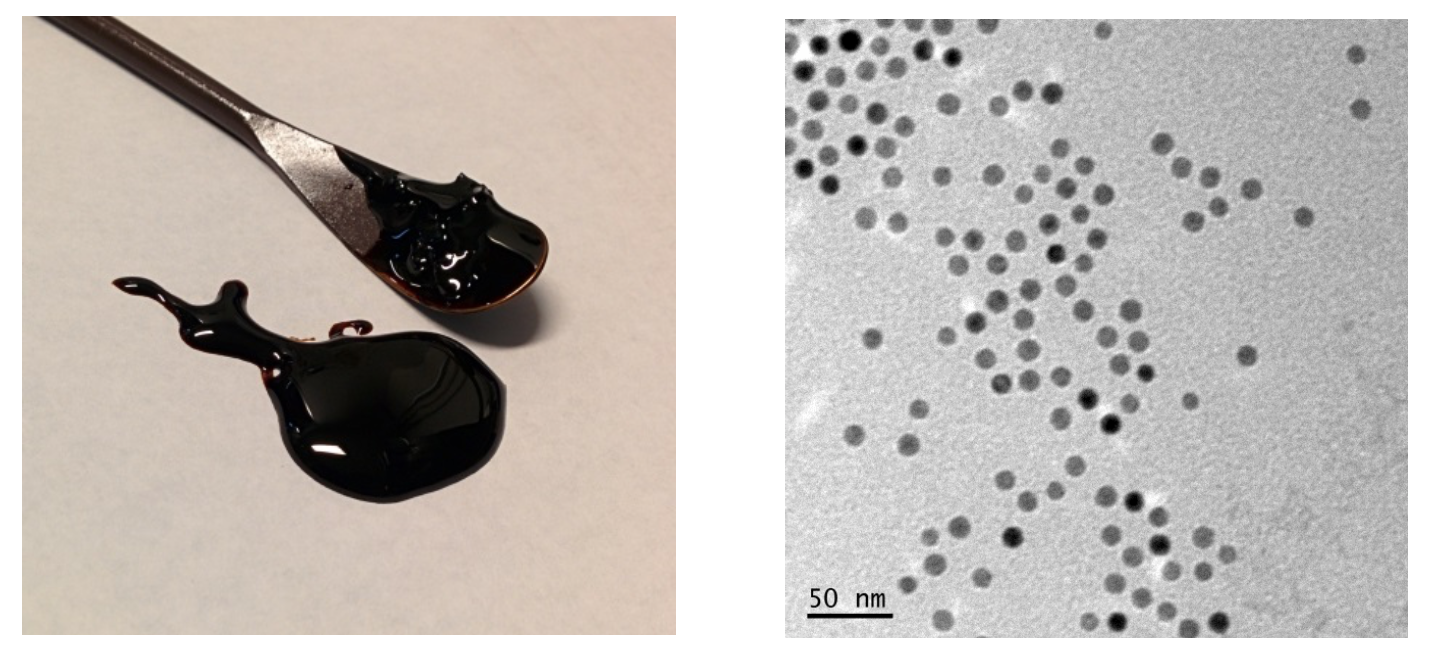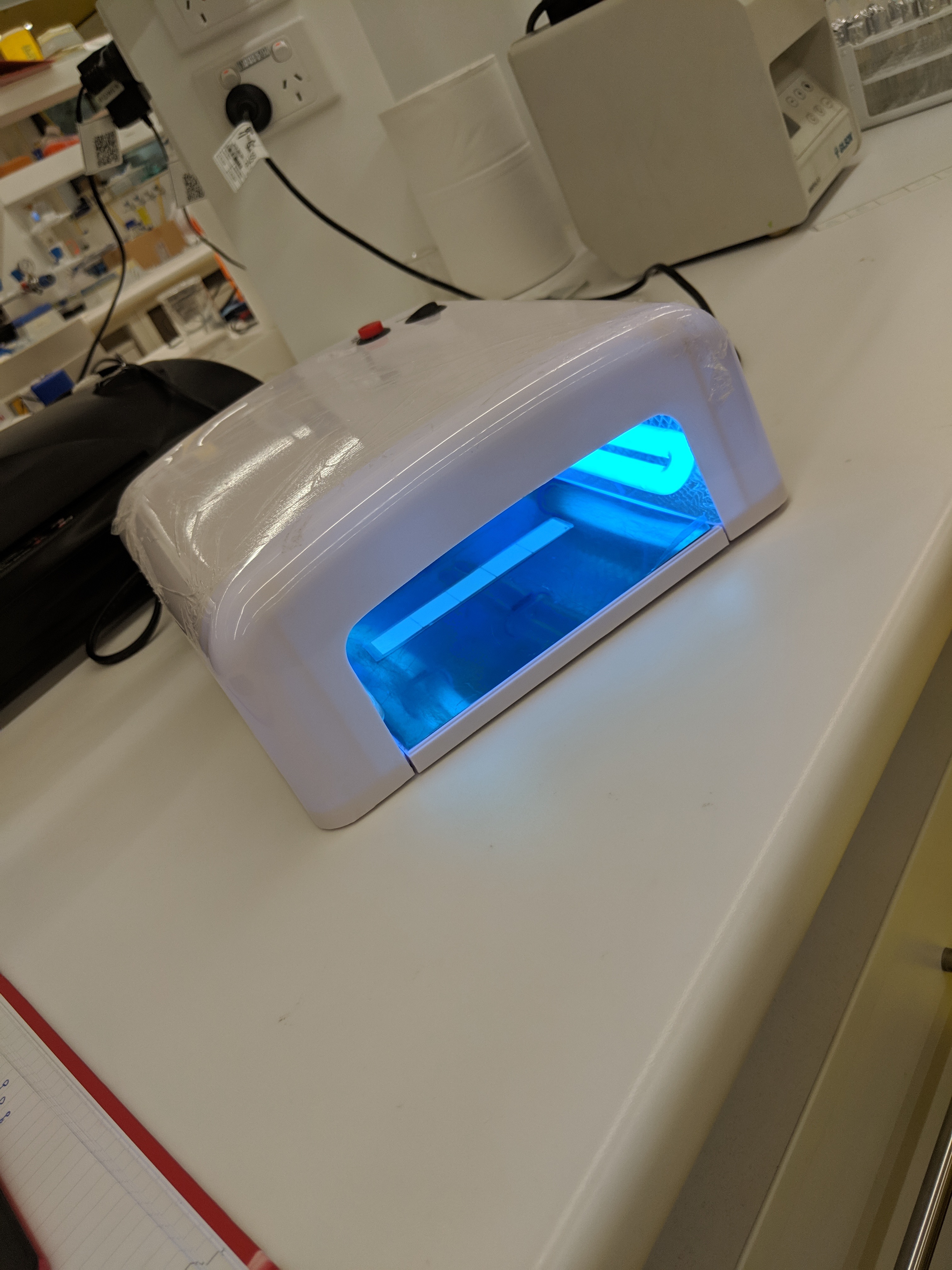The second work I’m developing is an essay film addressing the broader ethics of nanotechnology. This post focuses on the different aspects of filmmaking where ethical consideration of the nanotechnologies being developed in the lab is taking place.
A quick note on “thinking”. As has become very clear to me in the time that my moving image and film practice has entered a more reflective style of experimental and essayistic practice, thinking is about so much more than just stringing words together in the mind. For me, some of the richest forms of thinking occur when I am holding a camera, forming a hybrid between my body and this instrument of phenomenological modification, or when I stumble upon new relationships between image, audio, movement and text while editing video. So I use the term thinking here very broadly, to encompass the knowledge of the body, the hybridity of the creative systems we construct with our tools (both manual and digital), as well as the content of information we engage with cognitively.
With this in mind, there are a few areas of my filmmaking practice that are currently becoming sites of thinking about ethics and the social and cultural implications of nanotechnologies.
1. Cinematography
This aspect incorporates my previous focus on how to make visible, or present, the nanoscale using human scale, or live action, video. In this situation, we are asking how we can represent social and cultural issues in the lab. They present a sort lateral and temporal invisibility in that they largely play out outside of spaces of scientific development and a long time after the technologies are released into society. I will write more about this as it develops in coming weeks, however, it has been interesting to note how, during conversations with the cinematographer I am working with, Cameron Matheson, our perspectives on cultural and ethical implications of nanotechnologies are shifting as we think of them visually, symbolically and metaphorically.
2. Microcinematography
In my practice, microscopy is a mode of communication, visualisation and reflection. This space (of blinkered darkness as you peer down a microscope) was the most philosophical. Time while scanning images, draws my mind away from the rat race, the experiment, analyse, report, finish, rinse repeat cycles of “productivity”. The space where time goes still. The time when for hours it is just me and my senses, and the ruminations on what I was “really doing” with a project. Microscopy represents a reflective space for me, but now I use it, consciously, within my practice, sometimes alone, sometimes with my collaborators. Something about the time set aside – 2 blissful hours on an in demand machine – about the cool desiccated air that flows, about the sometimes darkness, opens a portal to a different view, a different type of lensing on your sample, your object of study.
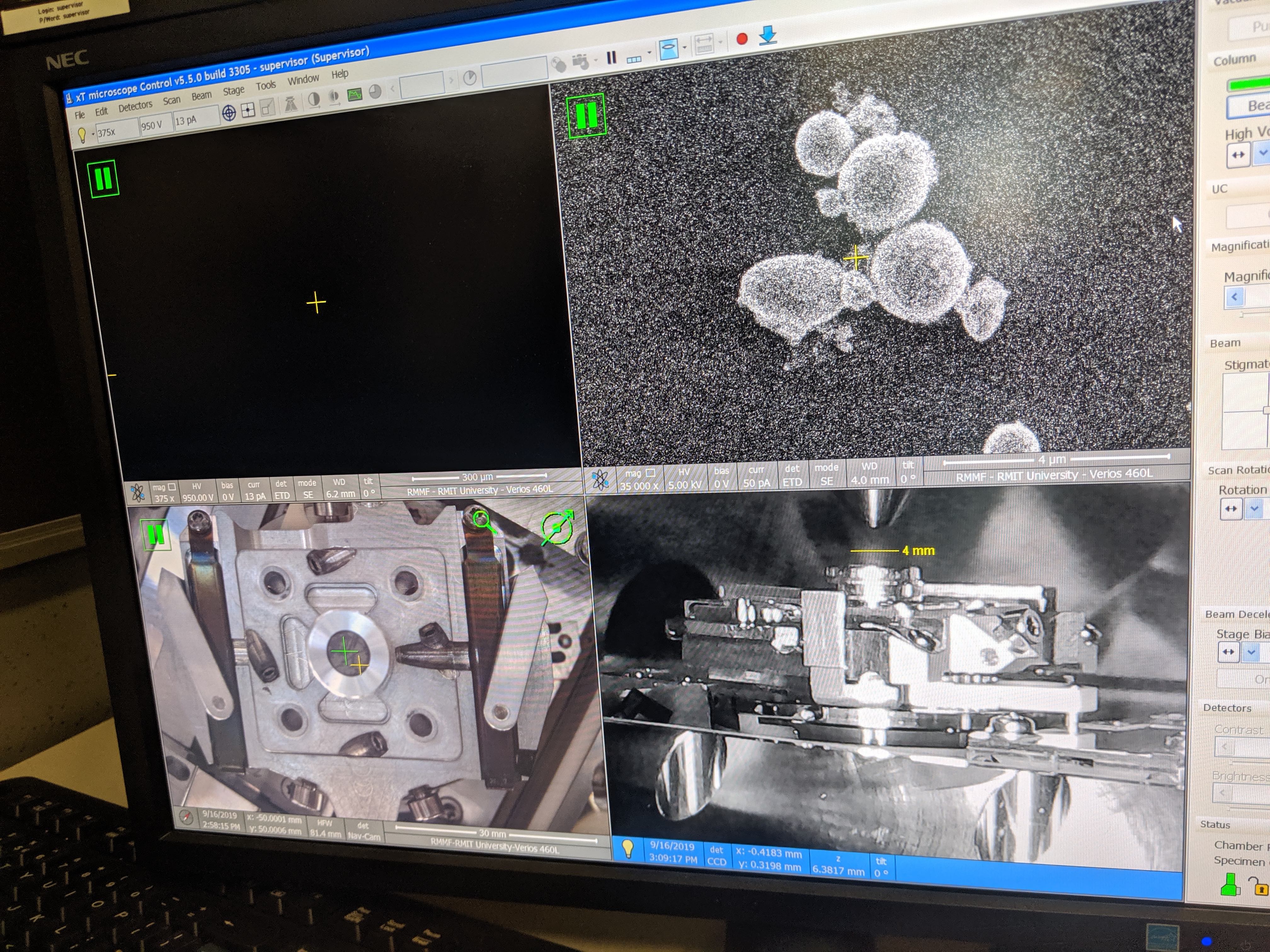
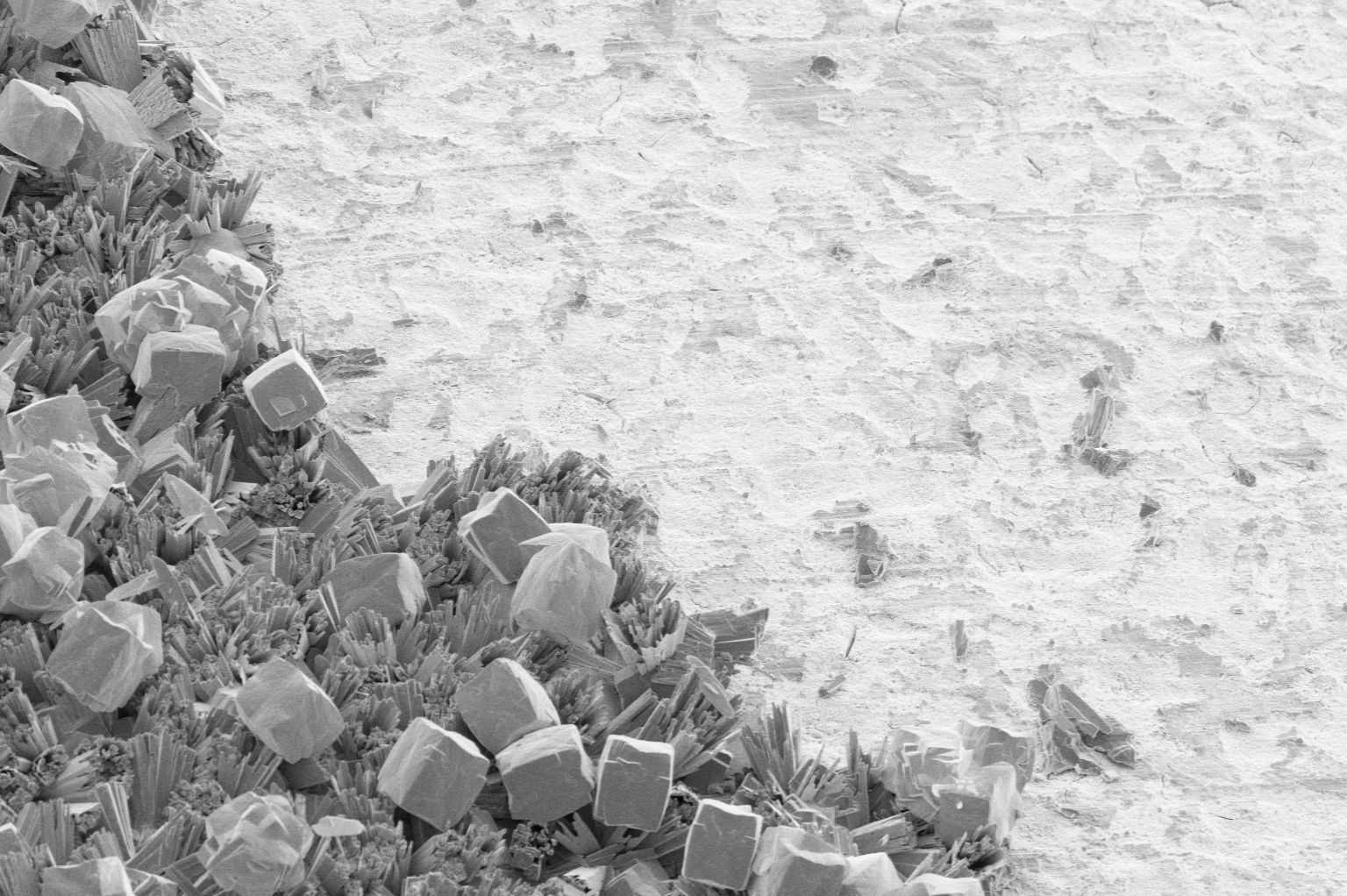
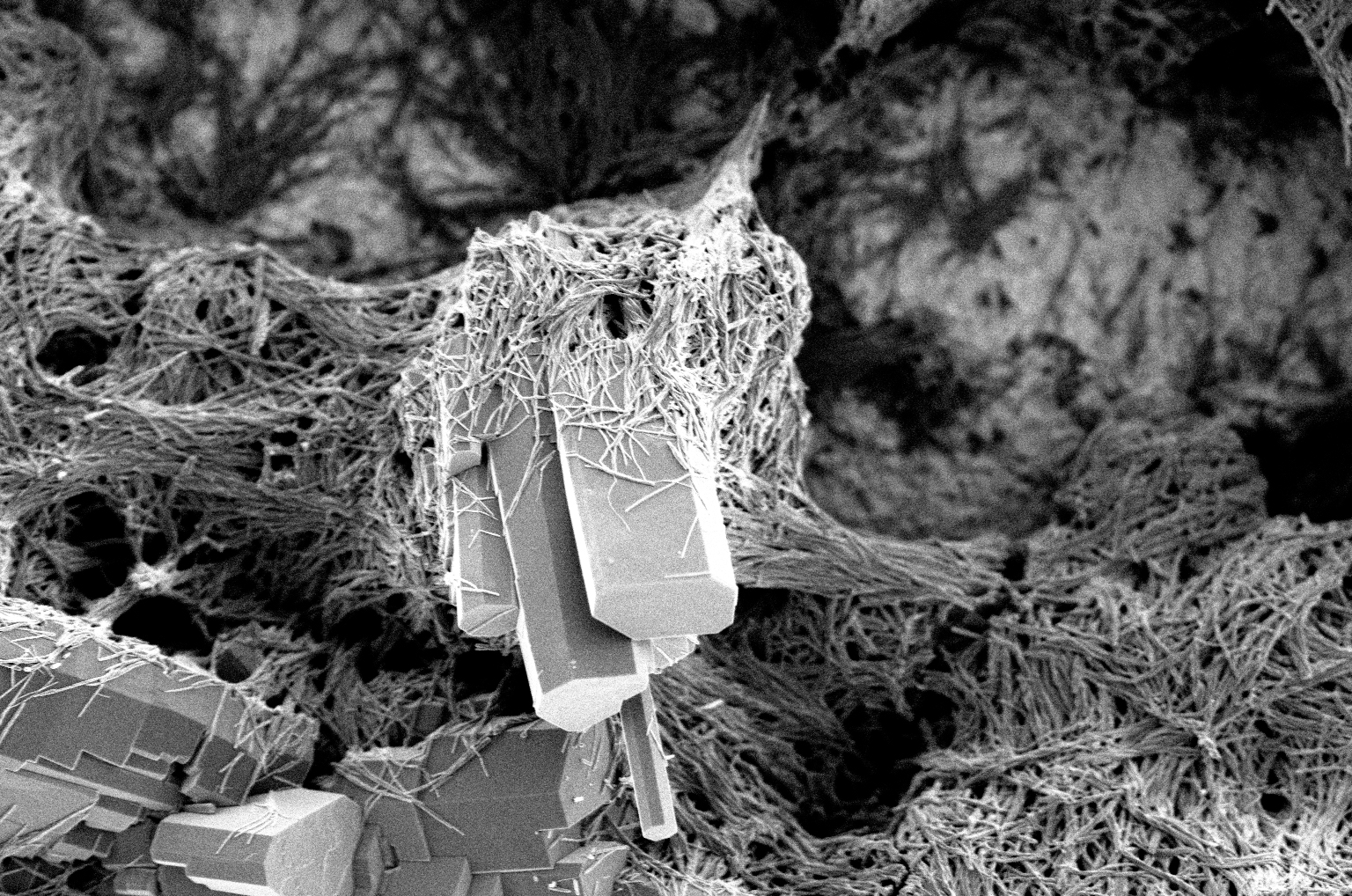
These images are of organic semiconductors imaged via Scanning Electron Microscopy (SEM). I am working with the FEI Verios 460L SEM as a cinematographic tool, leveraging the inbuilt capabilities of the instrument to create movement and merging scientific imaging and video post-production workflows.
3. Developing voiceover
I have a begun a new collaboration with the poet and essayist Will Alexander and we are currently working to develop an essay that will act as the guiding structure for this essay film. I first met Will about five years when he was performing his poetry in Los Angeles, and was enraptured by the way he used scientific language — it was raw, visceral, rhythmic. I had often adopted the verbs of science for other uses, emotional and poetic, yet he is a master at this, creating flows between terms long cloistered within a scientific vernacular, and the existential, spiritual, and human. At times his work is so laden with these words that understanding their meaning becomes the less important experience of the writing and the rhythms and textures of the text take over. You can read one of my favourite poems of Will’s here.
Will and I have an epistolary relationship in that we write to one another via email. Back and forth bodies of text, of thoughts. A seeding of ideas for one another. The word is obviously the core of this, and one, even given my thoughts above on thinking, I still value highly and find incredibly inspiring. A sample of Will’s resulting essayistic writing on nanoscience:
“The former are not conditions controllable at room scale, subject to the windowless research through increment pursuing the trapping of voltage via cognitive emendation. Saying such I am not abstractly demeaning “bioimaging and diagnosis” that can divert disease ridden bodies from the looming door that is death, as if this diverting in itself is capable of neutralizing the soul implying by its prowess that the soul is of some secondary order sans its un-acknowleged alchemical presence. In modern parlance evidence by the senses remains the prime priority. For instance, we find in “microfabrication” principles such as “etching” “bonding”, “polishing” such “integrated circuits” “solar cells” “Flat Panel Displays” prone to the principles of the marketplace. As with Molecular Engineering these principles are concerned with the delimited functioning of matter, nothing of which approaches the understanding of transmutation. And by transmutation one fields concern with states that supersede those of a calcuable nature. I’m thinking of solid-liquid interfaces found in Surface science, or the “subdiscipline” that is organic chemistry, all of which gives way in the end to arid complexification of the marketplace. Even when the body is diverted from death by means of materials whose structure of measures registers “billionths of a meter” by our very circumstance nanomedicine indirectly infers the profit driven atmosphere that accrues from life and death. This is none other than the paradise of quantity, of its infinite alterity, never inclined to transgress its authorship by matter.”
4. Interviewing
Each day I spend time with scientists talking with them about their projects, and their views on the social and cultural implications of the nanotechnologies they are developing. These conversations — informal or semi-structured interviews — I have come to see as dialogic thinking, as they are informing and shifting perspectives for myself and the scientists. These interviews will formalised and documented in coming weeks on camera in workshops with the scientists. Often these conversations are happening in the laboratory as I learn more about the chemistry involved. I have been working with the nanoscientists in the lab, learning how to synthesise the nanoparticles that are used in their nanobiosensing systems.
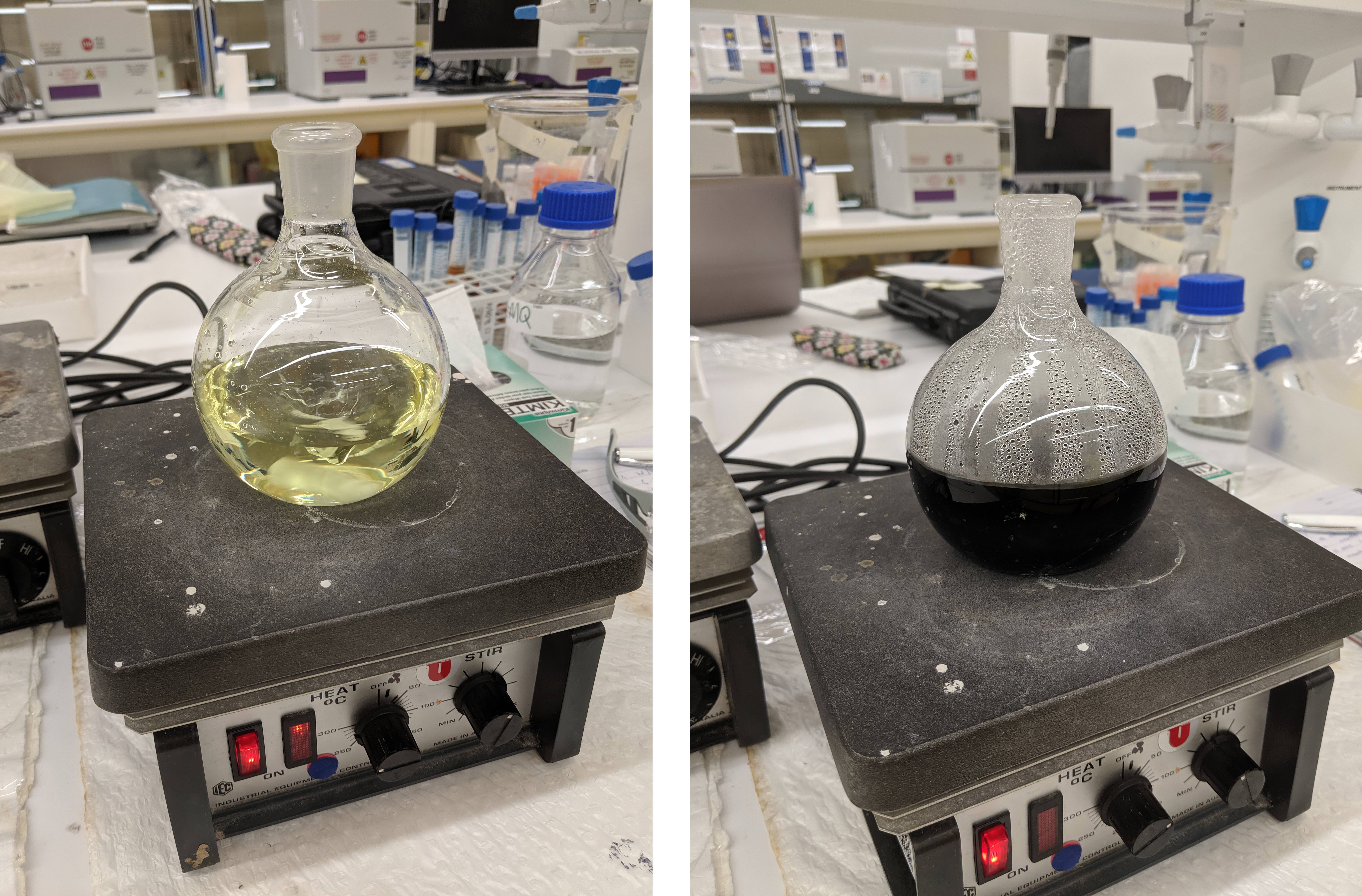
These images show gold nanoparticles being synthesised. On the left the colour prior to reducing the gold into nanoparticles, and on the right the dark grey after the addition of a reducing agent. This colour will change again into a deep red wine colour after heating, indicating successful nanoparticle synthesis.
5. Sound design
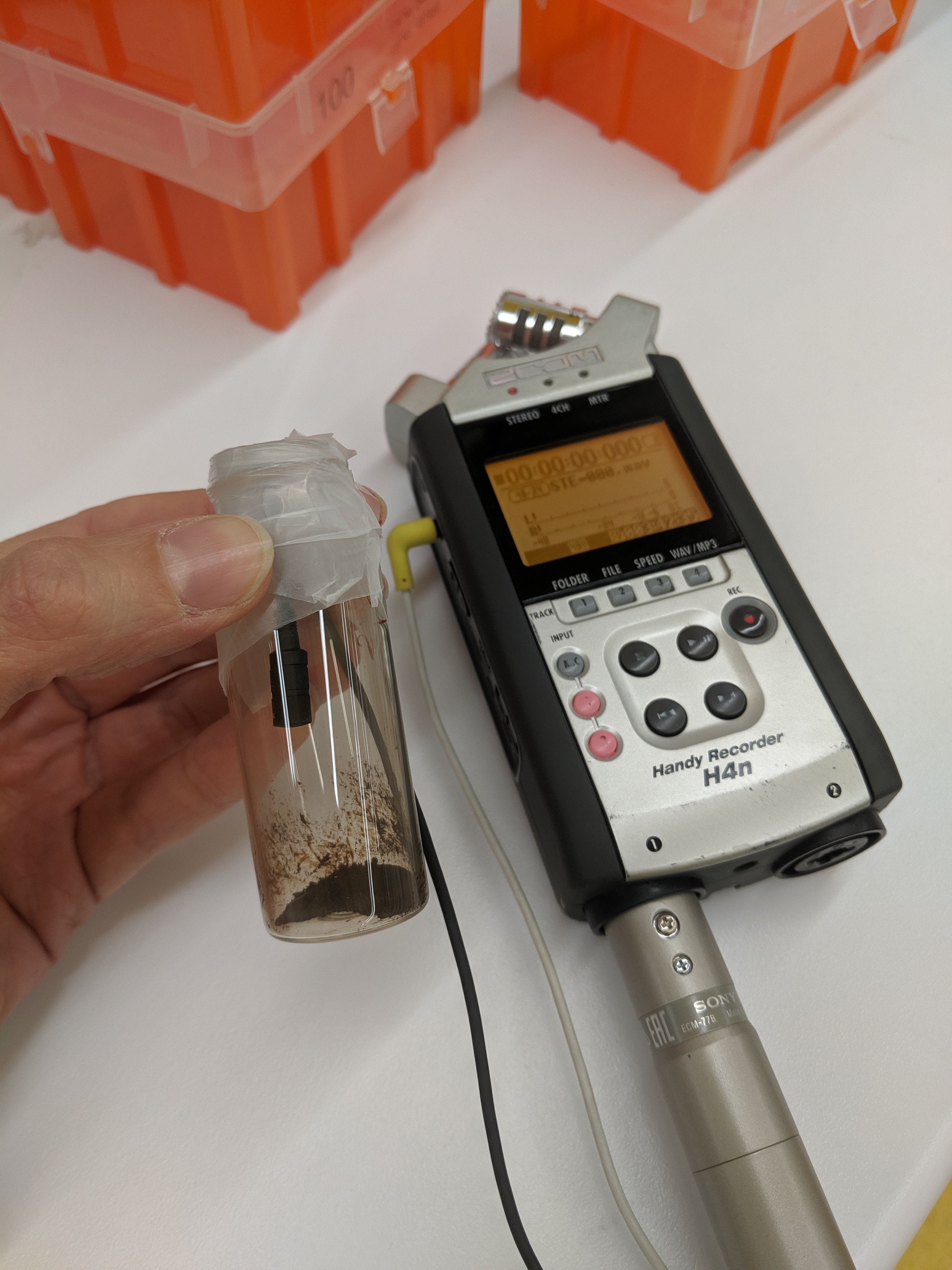
I have begun to record and think about sound in relation to nanoparticles but I will talk more later about sound design and editing as I focus on those aspects of the practice.
So through these different aspects of filmmaking practice, we’re beginning to develop our understanding of social and cultural implications of NanoBioSensing technologies. Collaboration and reflection are important in the practices introduced above. Collaboration creates space for multiple perspectives, serendipitous association, play, allows dialogic thinking, and can be considered to include collaboration with scientists, with other creatives, even with instrumentation and software (filmmaking as an aggregation of collaborators). Filmmaking creates an umbrella over a multitude of activities, simultaneously providing opportunities to reach inward toward oneself and outward to observe and relate to the world.

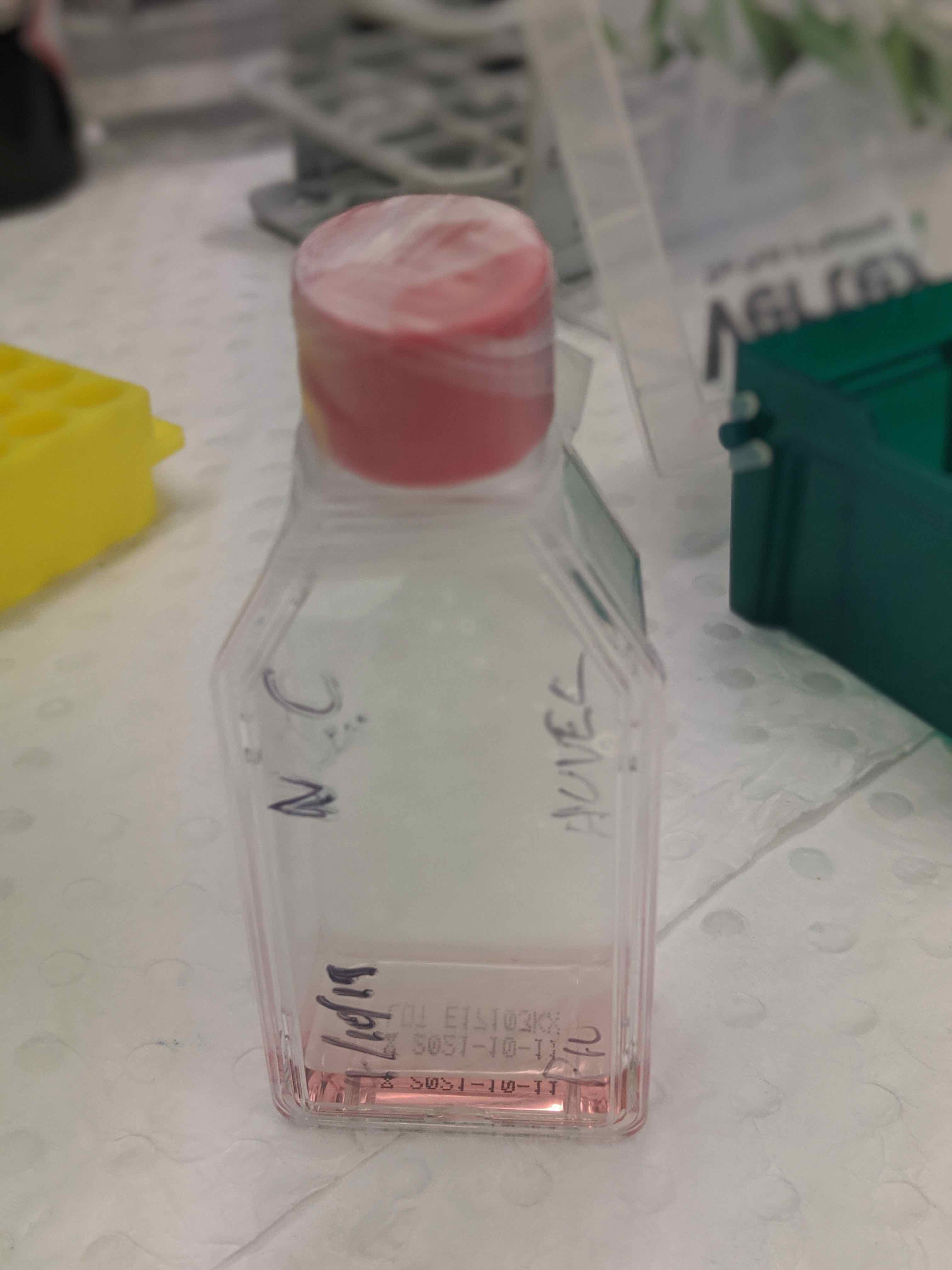
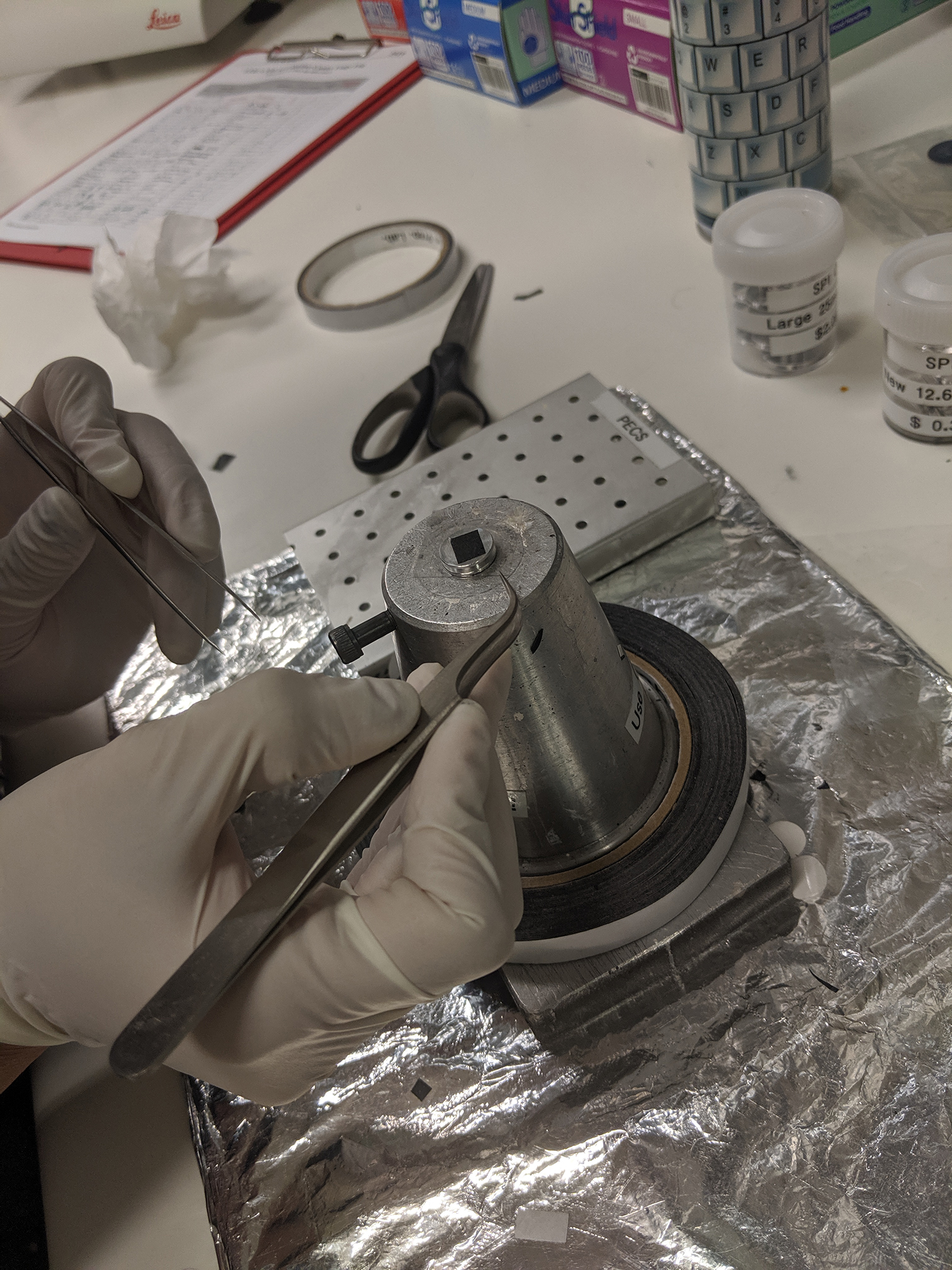
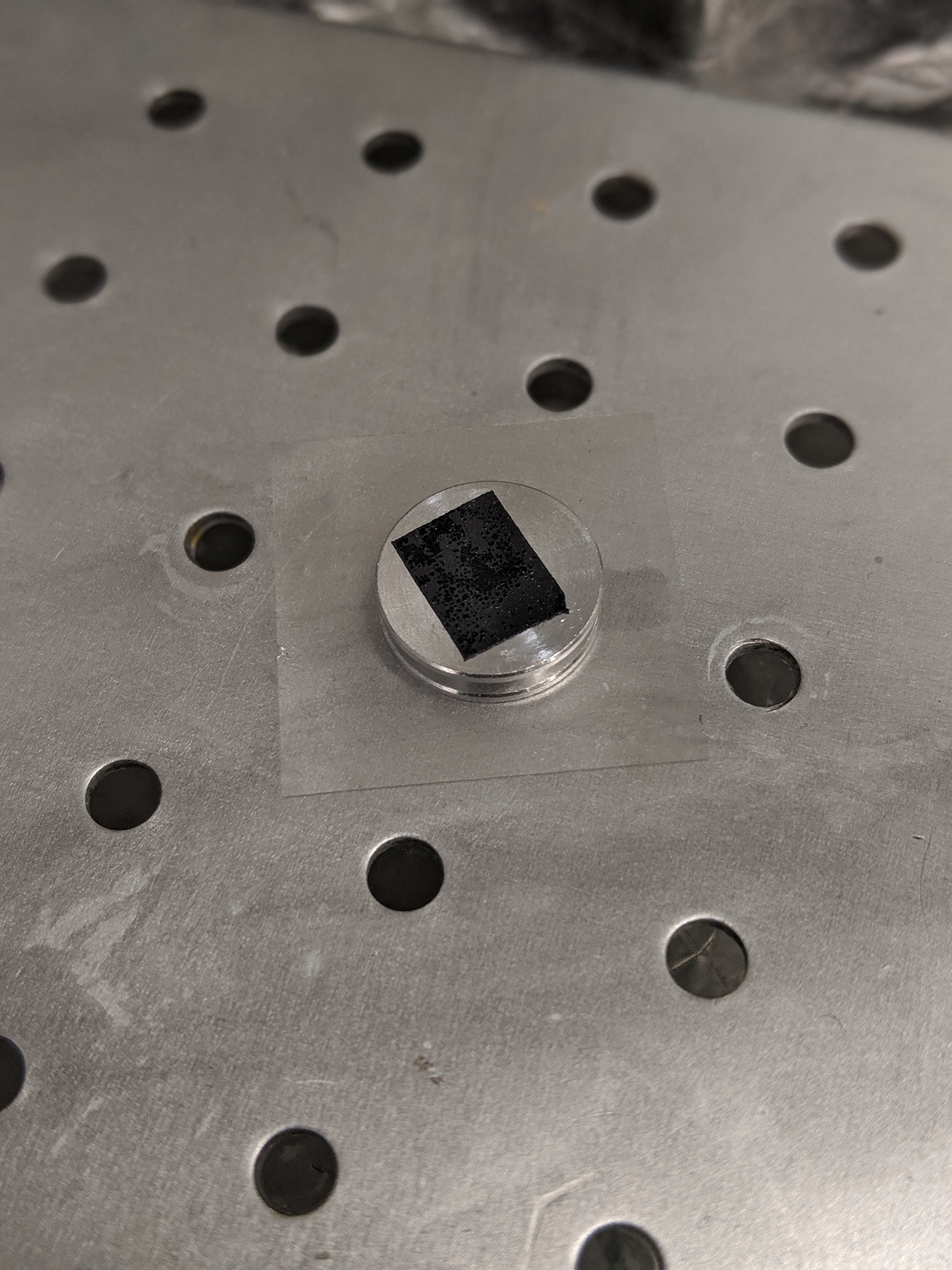
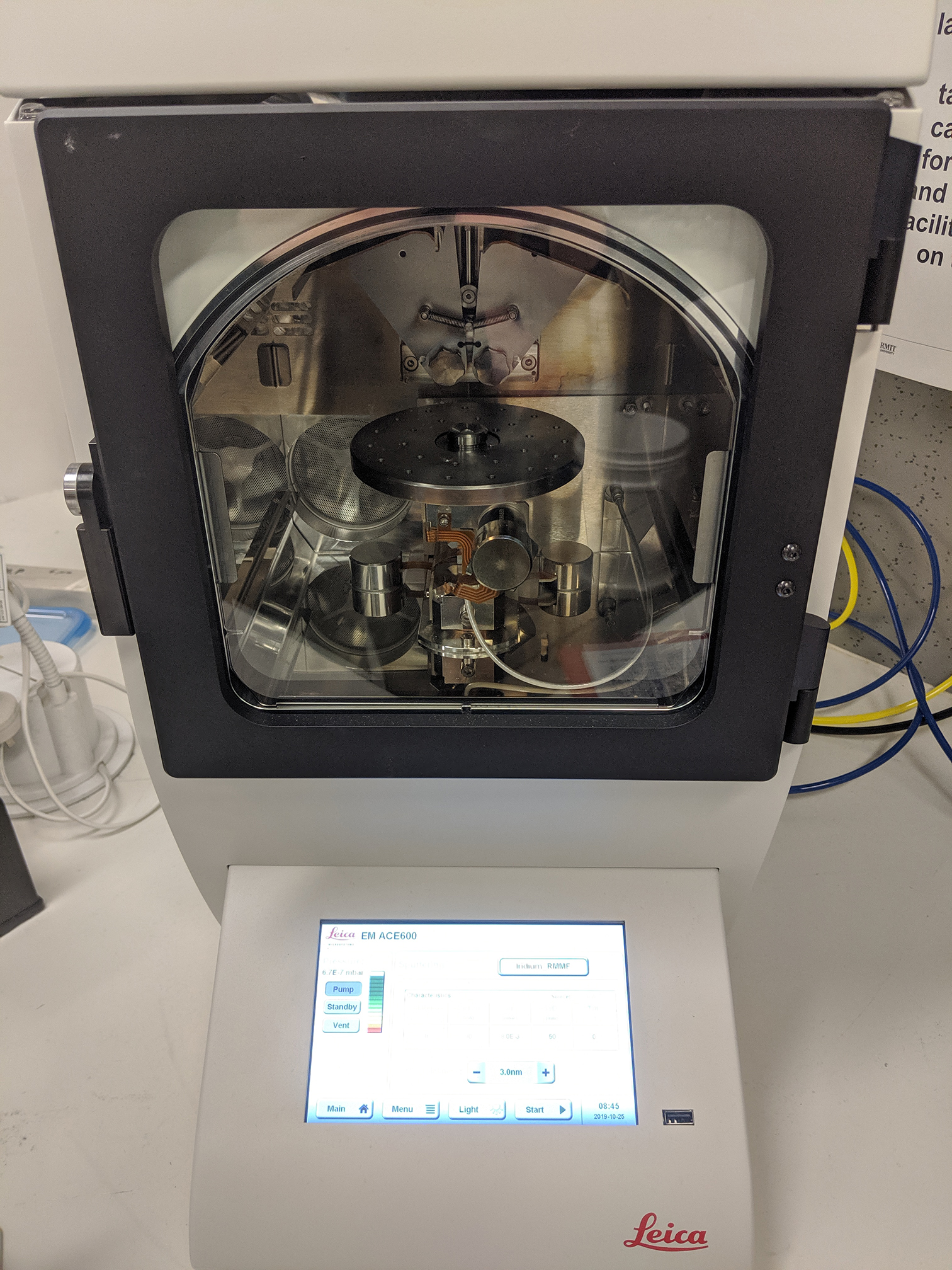
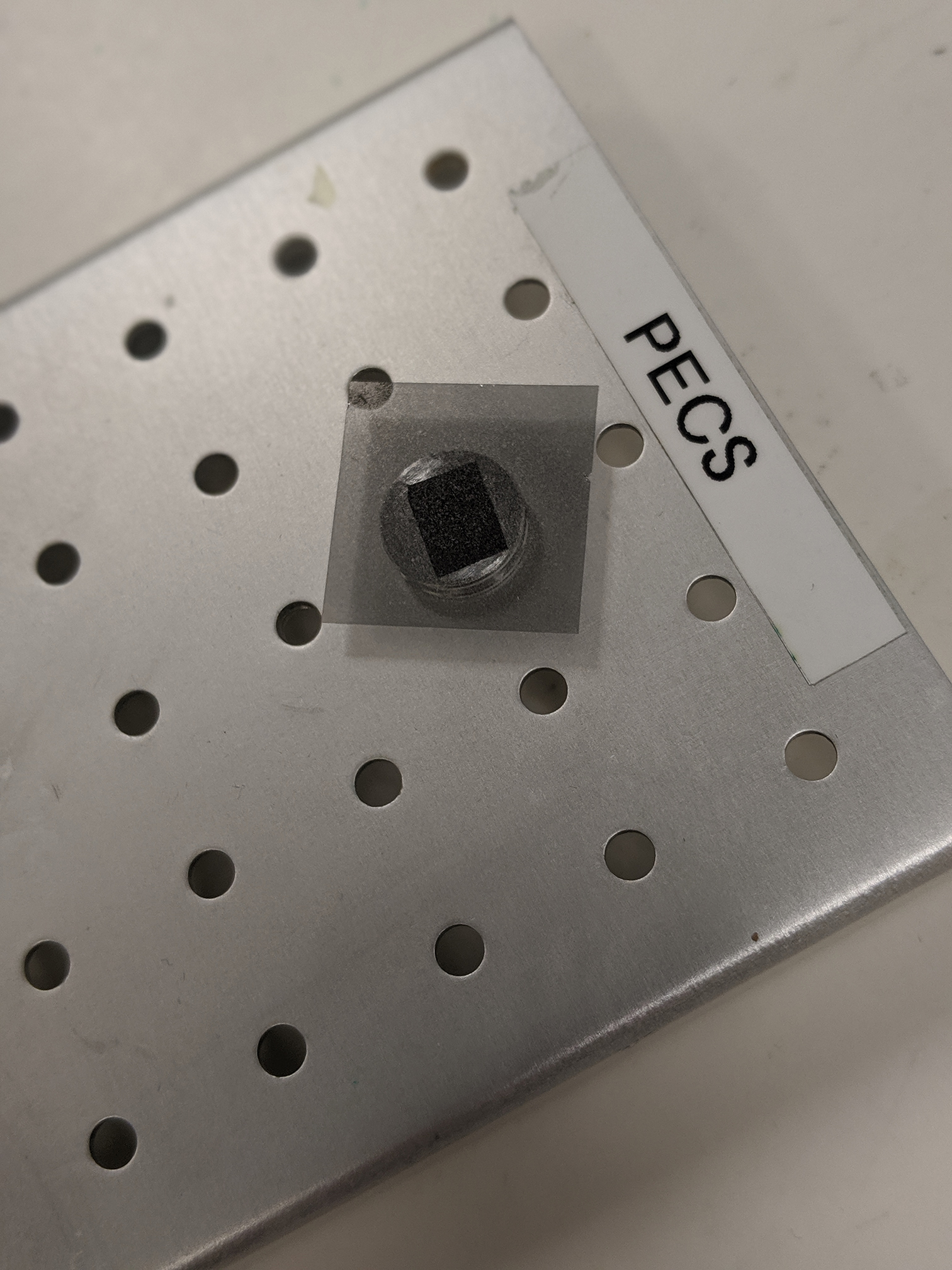 The sample is then sputter coated with a metal such as gold or iridium. Without this coating a biological sample with low conductivity wouldn’t have enough contrast to be seen particularly well.
The sample is then sputter coated with a metal such as gold or iridium. Without this coating a biological sample with low conductivity wouldn’t have enough contrast to be seen particularly well.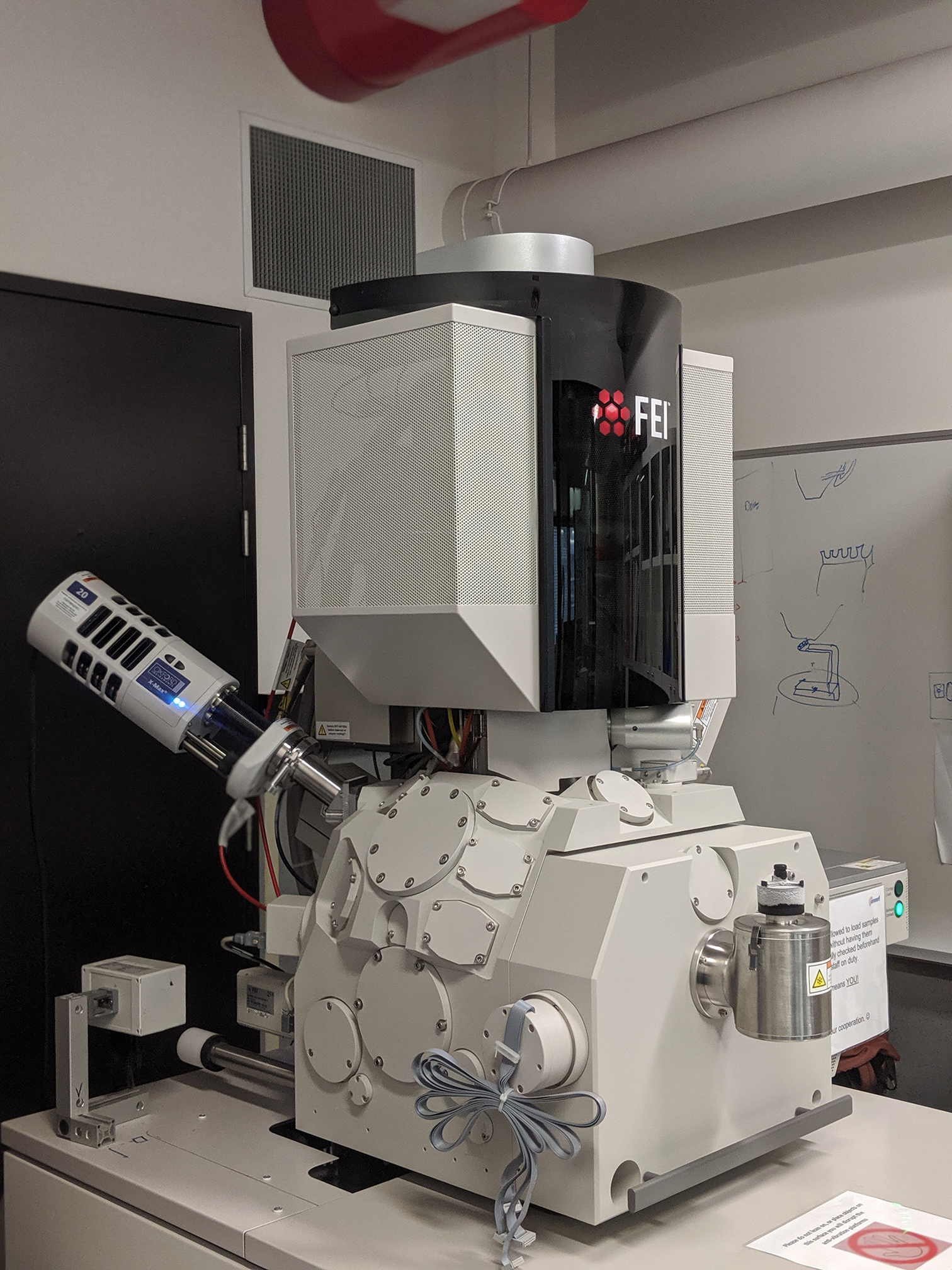
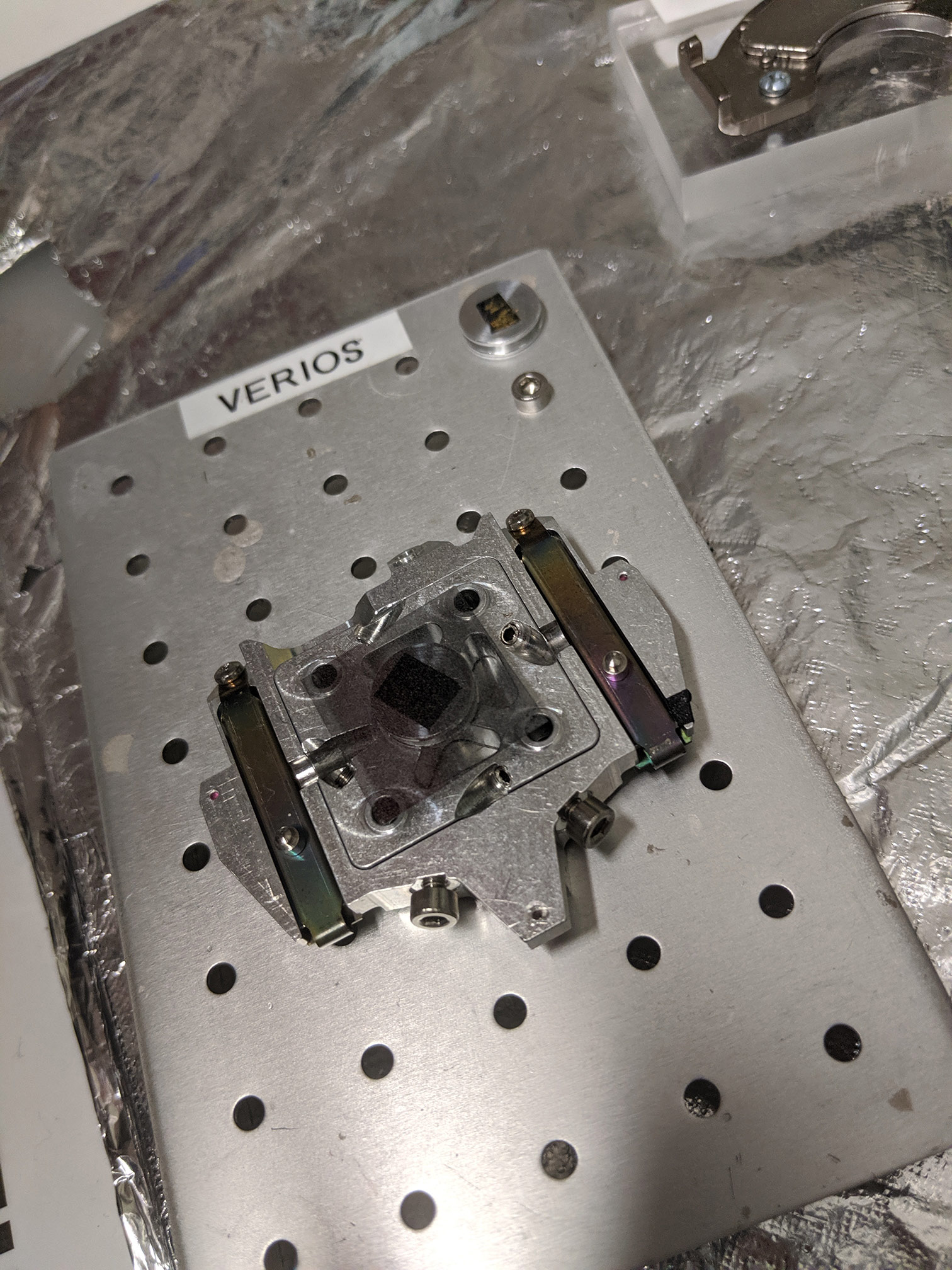
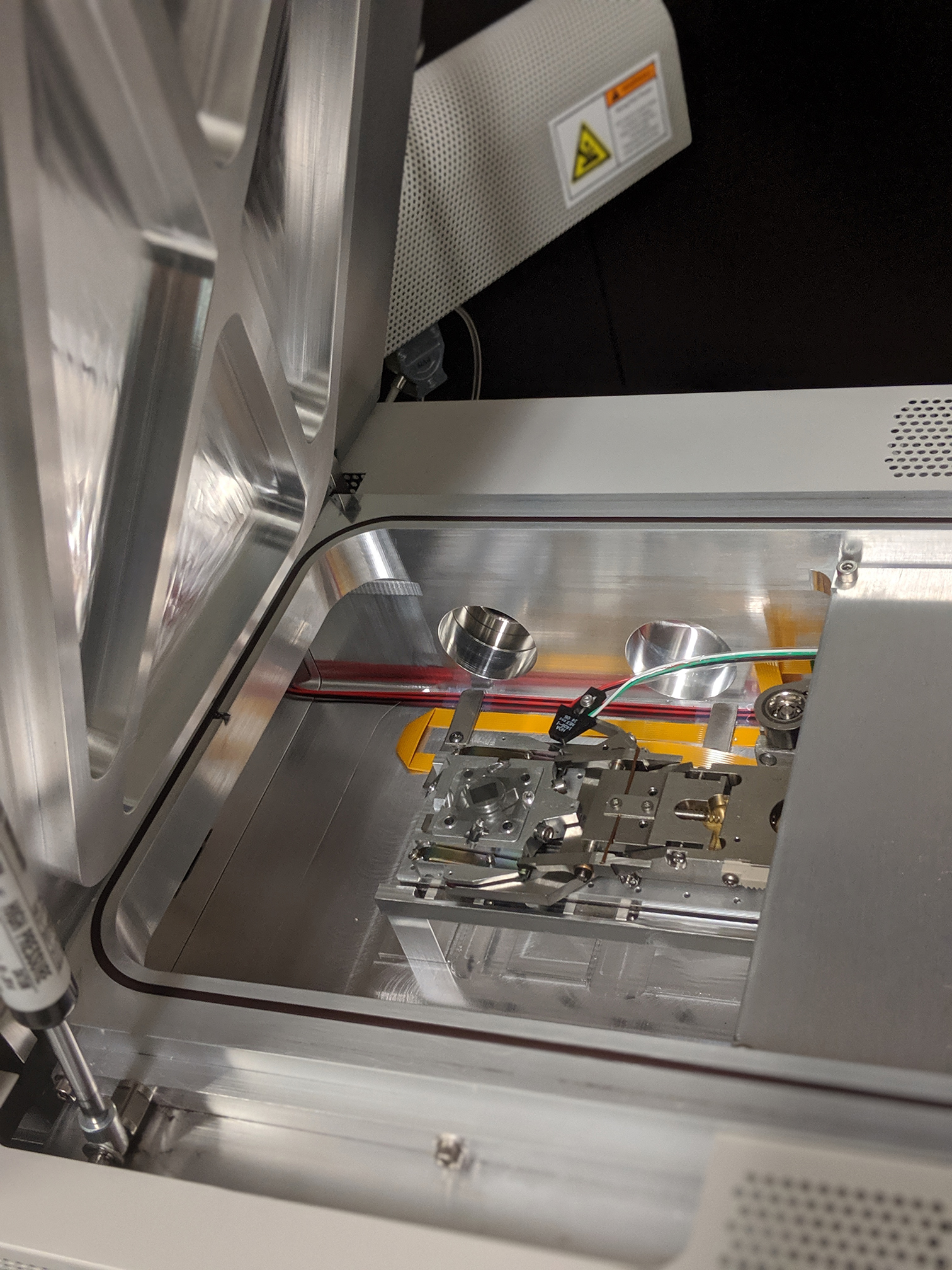
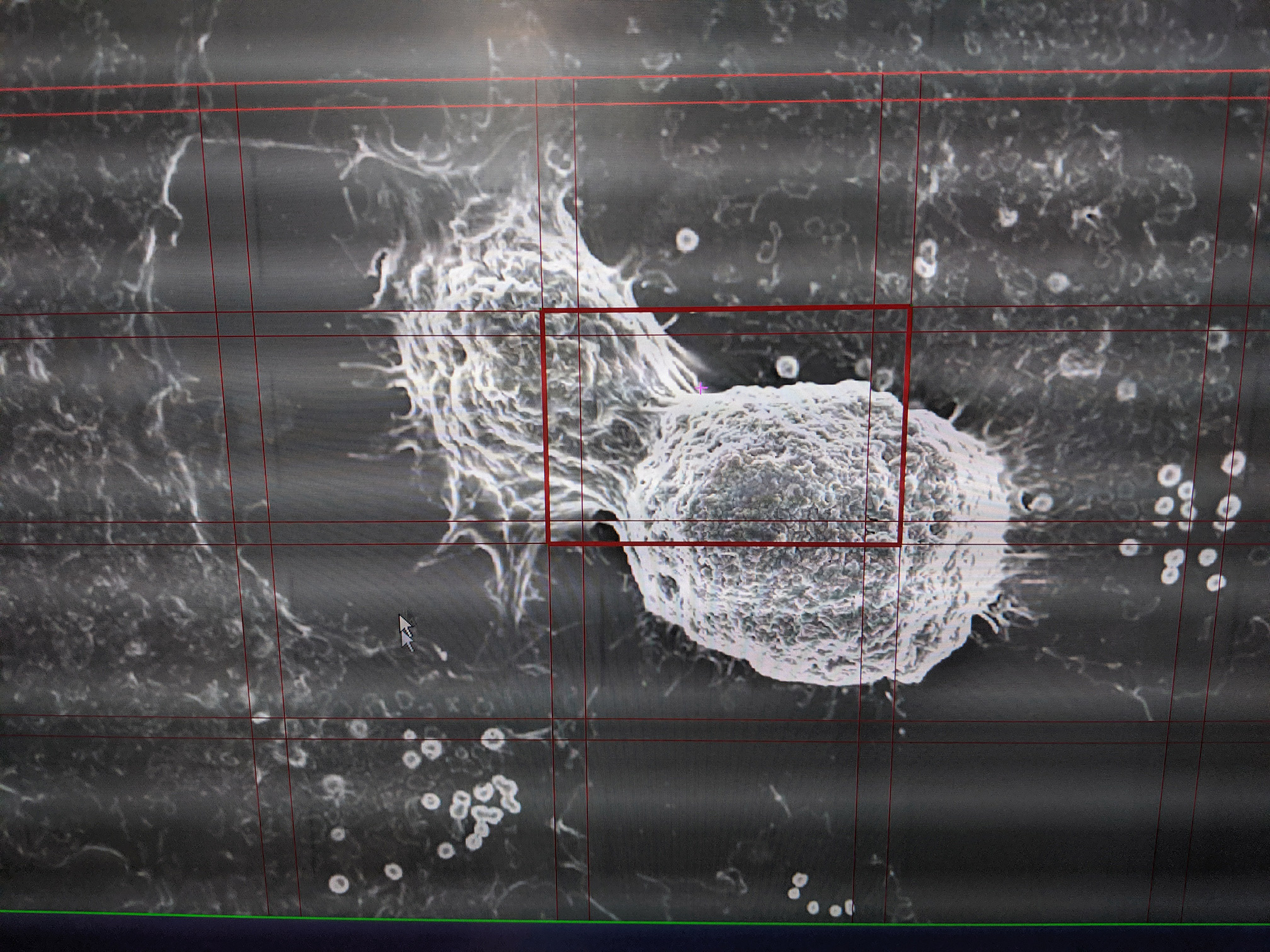 The gridded lines of the FEI MAPS software that enables data collection across large areas, producing images of up to a terabyte that have sufficiently high depth, width and height resolution that they can later be used for virtual applications.
The gridded lines of the FEI MAPS software that enables data collection across large areas, producing images of up to a terabyte that have sufficiently high depth, width and height resolution that they can later be used for virtual applications.




